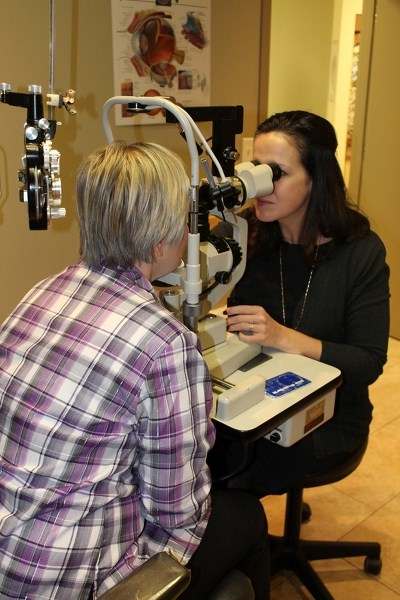The Canadian Diabetes Association and the Alberta Association of Optometrists are teaming up during November for Diabetes Awareness Month to educate Innisfail residents about the risk factors associated with the development of the disease.
More than 363,000 Albertans will be diagnosed with type 1 or 2 diabetes by 2020, according to a recent study commissioned by the Canadian Diabetes Association. The study goes on to say there is a potential cost to Albertans of close to $1.6 billion.
“Type 1 diabetes prevents your body from making insulin and type 2 diabetes prevents your body from properly using insulin,” said Debra Jakubec, the association's regional director for Alberta and Northwest Territories. “This in turn leads to high levels of sugar in the bloodstream, which causes damage to organs, blood vessels and nerves.”
While researchers continue to work to understand the cause of type 1 diabetes, type 2 is known to be caused by a number of factors, which may include genetics, high blood pressure and high cholesterol.
Diabetes and its complications can also affect many parts of the eye, the most serious being diabetic retinopathy. If left untreated the condition can result in blindness.
“Diabetic retinopathy occurs when there is a weakening or swelling of the tiny blood vessels in the eye, resulting in blood leakage and the growth of new blood vessels,” added Dr. Amy Forrest from Innisfail Eyecare Centre. “In the early stages, diabetic retinopathy is monitored through eye health examinations, but if necessary it may be treated with injections or laser therapy that seals off leaking blood vessels.”
Common signs and symptoms of diabetes include an unusual thirst or frequent urination, blurred vision, extreme fatigue or lack of energy, frequent infections and a tingling or numbness in the hands or feet.
“Individuals who think they may be developing diabetes should contact their doctor and get checked out,” said Jakubec. “It is recommended for anyone over the age of 40 to have a checkup whether or not you have symptoms. Like most chronic diseases, early detection of diabetes is key to decreasing complications and improving an individual's quality of life.”



